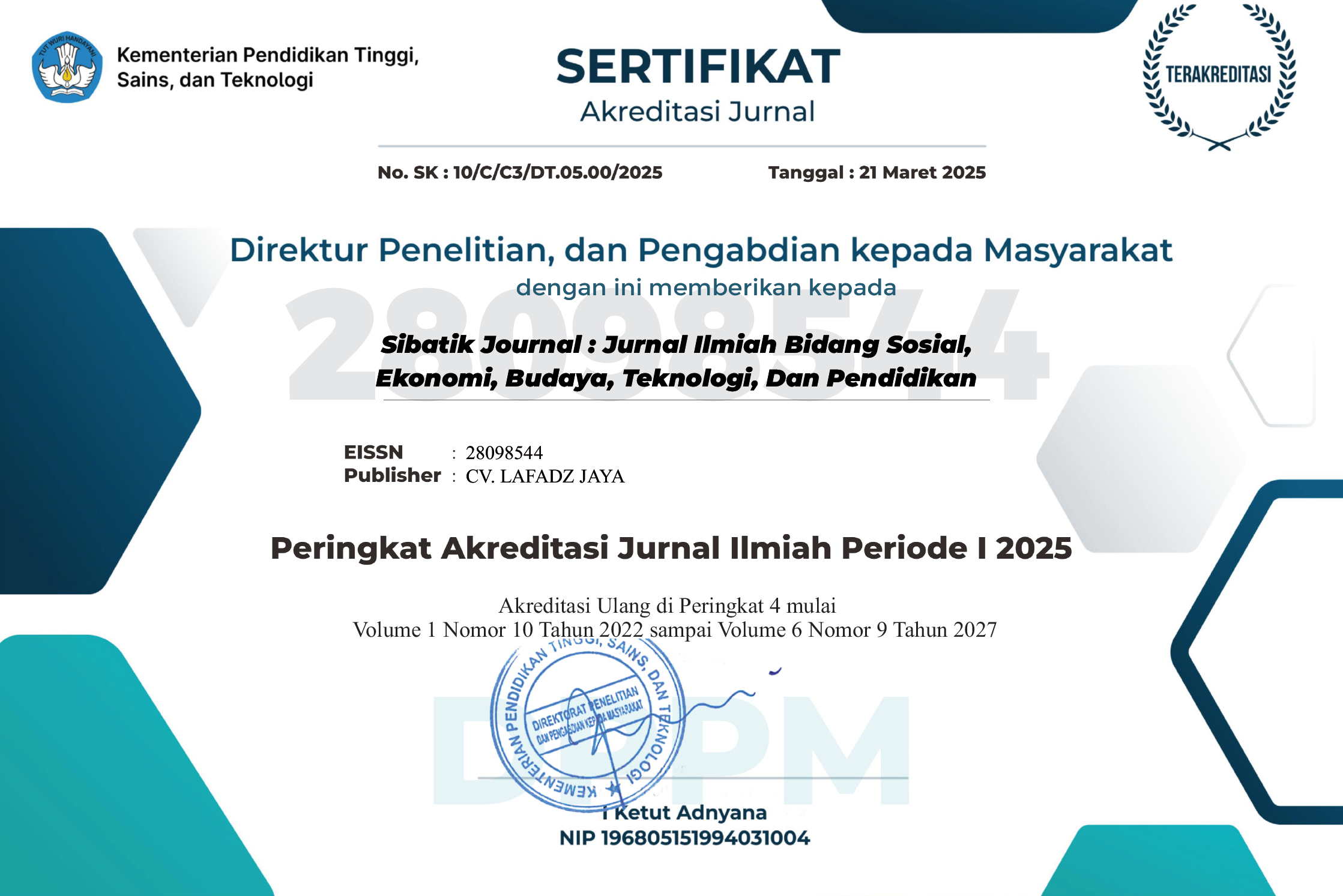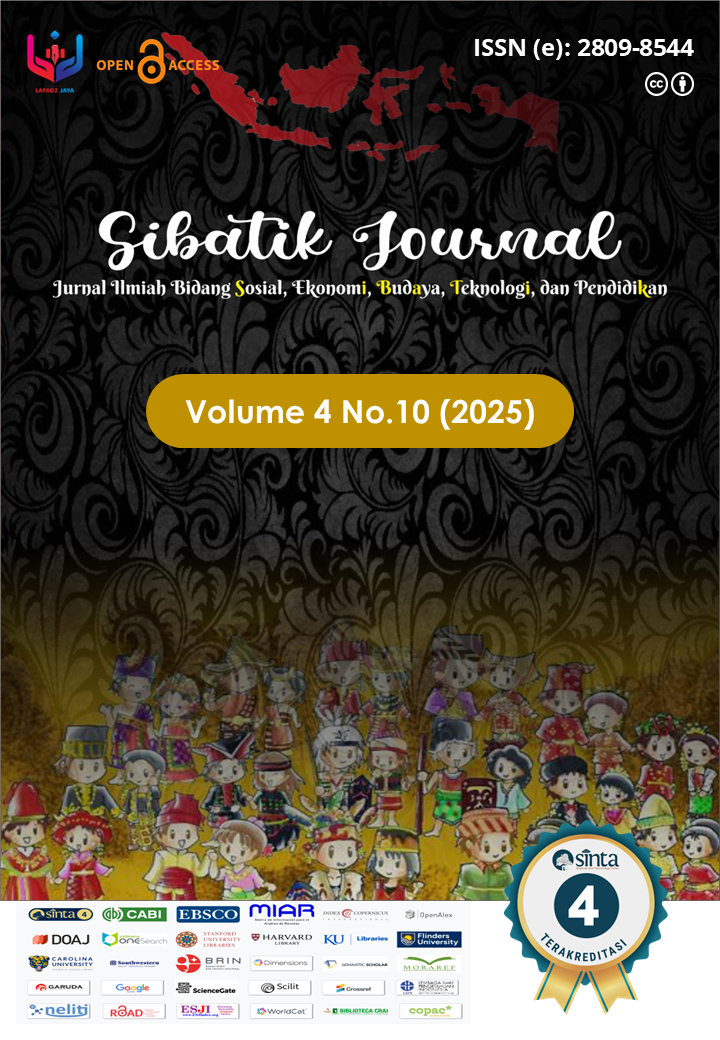DAMPAK PARIWISATA TERHADAP STRUKTUR EKONOMI NTB: PELUANG DAN TANTANGAN
Main Article Content
Eka Agustiani
Lalu M. Rifki
I Made Dwi Pradana
Nursalwah Juliana
This study examines the impact of tourism sector growth on the economic structure of West Nusa Tenggara (NTB) Province. Over the past decade, NTB has experienced a significant surge in tourism driven by national strategic projects such as the Mandalika Special Economic Zone (SEZ) and the MotoGP. This study aims to analyze the extent to which tourism has shifted the economic structure from primary to tertiary sector dominance, as well as to identify emerging opportunities and challenges. The methods used include analysis of secondary data from the Statistics Indonesia (BPS) and the NTB Tourism Office (Dispar), using the Location Quotient (LQ), Shift-share, and multiplier effects approaches. The results indicate that service sectors such as accommodation, food and beverage, and transportation have increased their contribution to NTB's GRDP. Tourism also provides significant opportunities for MSMEs and job creation, but this distribution is not yet fully equitable across regions. Inequality in infrastructure between regions, human resource quality, and environmental degradation are key challenges. Regional governments need to develop inclusive and sustainable governance so that the benefits of tourism are not limited to certain regions. This research contributes to the literature on regional economic transformation and the strengthening of data-driven policies in the tourism sector.
Adisasmita, R. (2005). Dasar-dasar Ekonomi Wilayah. Graha Ilmu
Aghion, P., & Jaravel, X. (2015). Knowledge Spillovers, Innovation and Growth. The Economic Journal, 125(583), 533–573.
Aliakbar, M. (2019). Structural transformation and labor market dynamics in developing countries. World Bank Policy Research Working Paper.
Andergassen, R., Nardini, F., & Ricottilli, M. (2017). Innovation and structural change. Structural Change and Economic Dynamics, 40, 1–9.
Autor, D., & Salomons, A. (2018). Is automation labor share-displacing? Productivity growth, employment, and the labor share. Brookings Papers on Economic Activity, 2018(1), 1–87.
Badan Pusat Statistik (BPS). (2023). Provinsi Nusa Tenggara Barat dalam Angka 2023. Mataram: BPS Provinsi NTB.
Badan Pusat Statistik (BPS). (2023). Statistik Pariwisata Provinsi NTB 2023. Mataram: BPS.
Barro, R. J. (1991). Economic Growth in a Cross Section of Countries. The Quarterly Journal of Economics, 106(2), 407–443.
Bloom, D. E., Canning, D., & Fink, G. (2010). Implications of population aging for economic growth. Oxford Review of Economic Policy, 26(4), 583–612.
Dabla-Norris, E., et al. (2014). Structural Reforms and Productivity Growth in Emerging Market and Developing Economies. World Development, 63, 1–10.
Dinas Pariwisata NTB. (2022). Laporan Tahunan Perkembangan Pariwisata NTB. Mataram: Disbudpar NTB.
Dwyer, L., Forsyth, P., & Spurr, R. (2010). Estimating the economic impacts of tourism. Annals of Tourism Research, 37(1), 79–100.
Firmansyah, M., Sahri, S., Irwan, M., & Maryam, S. (2024). Perubahan Struktur Ekonomi Provinsi Nusa Tenggara Barat. Elastisitas: Jurnal Ekonomi Pembangunan, 6(2), 12–24.
Islamy, N. (2019). Analisis Sektor Potensial, Dapatkah Pariwisata Menjadi Lokomotif Baru Ekonomi NTB? Journal of Indonesian Tourism, Hospitality and Recreation, 2(1), 1–10.
ITDC. (2023). Mandalika Special Economic Zone Development Report. Jakarta: Indonesia Tourism Development Corporation.
Kementerian Pariwisata dan Ekonomi Kreatif. (2021). Masterplan Pengembangan Pariwisata 10 Bali Baru. Jakarta: Kemenparekraf RI.
Kuswandi, A. (2020). Strategi Pemerintah Daerah dalam Pembangunan Pariwisata di Provinsi NTB. Jurnal Agregasi, 8(2), 90–94.
Leiper, N. (1990). Tourist attraction systems. Annals of Tourism Research, 17(3), 367–384.
Lewis, W. A. (1954). Economic Development with Unlimited Supplies of Labour. The Manchester School, 22(2), 139–191.
McMillan, M., Rodrik, D., & Verduzco-Gallo, Í. (2014). Globalization, Structural Change, and Productivity Growth, with an Update on Africa. World Development, 63, 11–32.
Purnamasari, N., & Nurjihadi, M. (2025). Pengaruh Indikator-Indikator Pariwisata terhadap Pertumbuhan Ekonomi di NTB. Pubmedia Social Sciences and Humanities, 2(3), 1–12.
Putri, S. B., & Vidriza, U. (2025). Analisis Peran Sektor Pariwisata terhadap Pertumbuhan Ekonomi di NTB. Jurnal of Development Economic and Digitalization, 4(1), 31–45.
Rencana Pembangunan Jangka Menengah Daerah (RPJMD) Provinsi NTB 2019–2024. (2020). Pemerintah Provinsi Nusa Tenggara Barat.
Rodríguez-Pose, A., & Wilkie, C. (2017). Strategies of economic development: A view from the periphery. Cambridge Journal of Regions, Economy and Society, 10(3), 469–487.
Rodrik, D. (2021). Why Does Globalization Fuel Populism? Economics, Culture, and the Rise of Right-wing Populism. Annual Review of Economics, 13, 133–170.
Taufikurrahman, T., & Suwandana, E. (2022). Analisis Sektor Pariwisata dan Dampak MotoGP Mandalika. Jurnal Kepariwisataan Indonesia, 16(2), 163–185.
World Bank. (2020). Indonesia Economic Prospects: Boosting the Recovery. Washington, DC: The World Bank.
Yoeti, O. A. (2008). Pengantar Ilmu Pariwisata. Bandung: Angkasa.

























